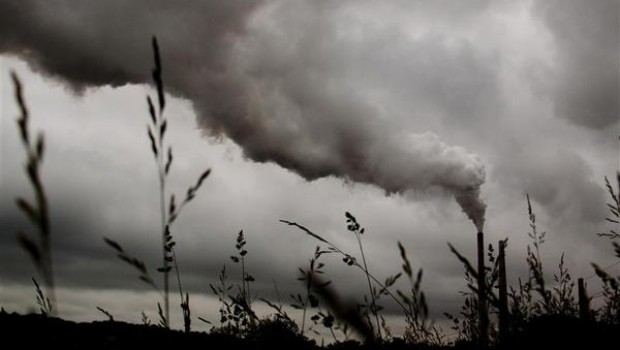Power crunch: Why windfarms don’t cause blackouts

Though the lights will almost certainly stay on this winter, the UK is heading into a years-long power crunch.
But the notion that this ‘crisis’ was caused by investment in renewables rather than poor policy and dire fossil fuel economics doesn’t really hold weight.
Indeed an Unearthed analysis found that for much of the last decade the costs of building and running new gas power plants have outweighed the benefits of selling gas — even before the UK’s Renewables Obligation (RO), and even without the introduction of the carbon tax.
Sure, the signature green policy pushes new gas from mostly uneconomical to entirely uneconomical, but it’s hardly the reason the government was forced to develop a capacity market subsidy scheme.
The power crunch was mostly caused by a combination of poor power plant economics, which pre-dates the renewables boom, and poor government policy, namely a capacity market that took too long to design, too long to come into effect and that doesn’t even do what it was supposed to (encourage investment in new gas).
Read last year’s power crunch analysis
The lights are staying on
As a new report from the Energy and Climate Intelligence Unit (ECIU) explains, the threat of blackouts has been greatly exaggerated.
Coal plant closures, however, have led to the tightest capacity margins in many years.
In its annual Winter Energy Outlook, National Grid announced that it has the 5% emergency capacity it needs for the coming cold months, indicating it would both purchase reserve energy via interconnectors from Holland and France and count on the consistently underestimated energy offering from renewables.
Next year may be a different story; Eggborough, Ferrybridge and Longannet coal power stations are due to retire while only the Carrington gas plant will come online.
That said, there’s nothing to stop the government from paying to keep these closing coal plants on standby next winter under the temporary capacity policy Supplemental Balancing Reserve (SBR).
Coal closures were predictable
The media, eager for an easy energy story and having spoken to industry officials, has put two and two together and decided this power crunch is the fault of the decarbonisation agenda — pointing the finger at all those new wind turbines.
But that’s not exactly true.
First of all, those coal plants aren’t closing because of the country’s climate targets (though that might mean it meets them), they’re closing because they’re old.
The UK has the oldest coal fleet in all of Europe, and only one plant – Ratcliffe – is so far compliant with the Industrial Emissions Directive (IED), Europe’s soon-to-be pollution regulations.
With power plant economics not what they used to be – low coal and carbon prices have driven down the wholesale price of power – it makes increasing sense to put relatively costly gas generation out to pasture rather than upgrade.
It’s not like the government didn’t know this was going to happen; all the pre-2016 coal plant closures have been on the cards since 2007, when they chose to opt-out of Europe’s Large Combustion Plants Directive (LCPD) — meaning they would have to switch off by the end of this year.
You do the math
Yes, the government failed to predict quite how big the clean energy boom would be, which did hurt fossil fuels, but the economics were pretty poor to begin with.
As was mentioned further up, only at a couple of brief moments over the last decade has building new gas made sense — and that’s hardly enough to inspire investor confidence.
What’s more, this unappealing environment pre-dates almost all of the UK’s green policies.
New gas just hasn’t been happening, with 5 plants built in the last decade compared to 28 the ten years previous during the ‘dash for gas’.
The government were slow to realise that if they wanted new gas plants then industry would require financial incentives, but eventually they did get there and in 2012 began consulting on the capacity mechanism, the auction of which began last year.
There are, however, two major things wrong with the capacity mechanism. Firstly, it took too long to design which led to this two year period in which the margins are razor-thin.
Secondly, and this is far worse, the policy was so poorly designed that it isn’t being used to support new gas but rather is keeping coal alive longer.
Only 5% of last year’s capacity contracts were secured by newly built gas whereas 10% went to coal plants.
Basically, because the capacity mechanism isn’t doing what it’s supposed to, you have execs from gas giants like Scottish Power begging for more subsidies while plants in the pipeline like Trafford are announcing delays and financial woes.
The answer is blowing in the wind
At the media briefing of the new ECIU report, Dr Robert Gross from Imperial said: “Windfarms don’t cause blackouts. They just don’t.”
And it really is that simple; Germany and Denmark have far higher renewables penetration than the UK, but far fewer blackouts as well.

For one, wind power is more useful than you’d think — there’s often strong winter winds. Last year, during the times of peak-demand, wind generated at least 1GW 80% of the time.
But mainly accusations over intermittency overlook the systemic approach used by Germany and Denmark — they are way ahead on storage, demand response, interconnection and distribution.
But that, like the reality of fossil fuel economics and subsidies, doesn’t sell papers.
This piece has been updated to mention what National Grid said in its WEO

